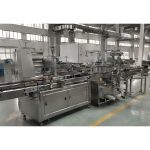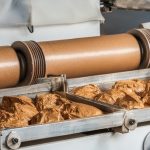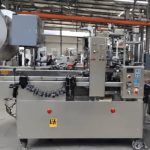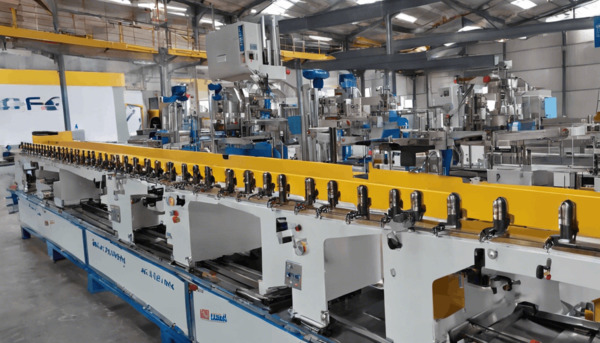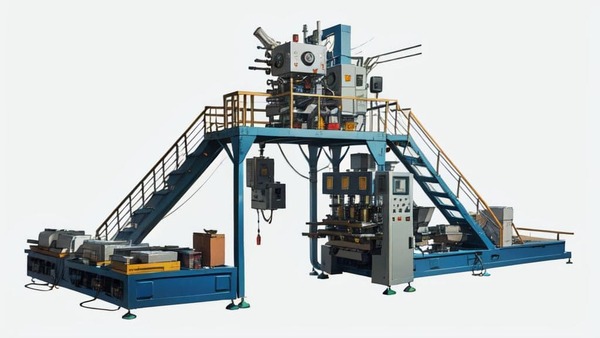
Overview of Ground Coffee Packaging
Packaging is an essential part of the coffee industry, not only for protecting the product but also for marketing and maintaining the freshness of ground coffee. Ground coffee packaging must fulfill multiple functions, such as preserving flavor and aroma, preventing exposure to air and moisture, ensuring ease of use, and appealing to consumers through attractive design.
In this article, we will explore the various methods used to package ground coffee, the types of materials involved, the machinery utilized in the process, and how trends like sustainability are reshaping packaging practices in the industry. We will also touch upon similarities between coffee packaging machines and other food packaging equipment, such as beef jerky packaging machines.
Key Functions of Ground Coffee Packaging
Ground coffee packaging serves several critical functions that go beyond simply enclosing the product. The key objectives include:
1. Preservation of Freshness
Coffee is highly sensitive to oxygen, light, and moisture. If exposed to air for extended periods, ground coffee quickly loses its aroma and flavor due to oxidation. Effective packaging ensures that the coffee remains as fresh as possible from the time it is packaged until it reaches the consumer.
2. Protection from Contaminants
The packaging must act as a barrier against contaminants such as dust, insects, and microorganisms. It should also prevent the absorption of external odors that could alter the taste of the coffee.
3. Ease of Transportation and Storage
Well-designed packaging ensures that the product can be transported and stored efficiently without compromising its quality. Compact and stackable designs are particularly valued in supply chain logistics.
4. Consumer Convenience
Features like resealable zippers, easy-tear notches, and lightweight packaging make it easier for consumers to use and store ground coffee.
5. Branding and Marketing
Packaging plays a vital role in branding and attracting customers. High-quality printing, eye-catching designs, and unique shapes help coffee brands stand out on store shelves.
Materials Used in Ground Coffee Packaging
The choice of materials for packaging ground coffee is dictated by factors such as cost, durability, environmental impact, and ability to preserve freshness. Below are the most common materials used:
1. Flexible Laminated Films
Laminated films combine multiple layers of materials (e.g., plastic, aluminum foil, and paper) to provide a durable yet lightweight barrier against air, moisture, and light. They are commonly used for vacuum-sealed coffee packs.
2. Aluminum Foil
Aluminum foil offers excellent barrier properties and is often used in combination with other materials for flexible pouches or sachets.
3. Kraft Paper
Kraft paper is an eco-friendly option often used for specialty or artisanal coffee brands looking to emphasize sustainability. It is typically paired with inner liners for additional protection.
4. Plastic Films
Plastic films are cost-effective and lightweight but may lack the premium appeal of other materials like kraft paper or laminated films.
5. Biodegradable Materials
As sustainability becomes a priority, many brands are transitioning to biodegradable or compostable materials made from renewable resources such as plant-based plastics or paper.
Packaging Formats for Ground Coffee
There are several common formats used for packaging ground coffee, each catering to different market segments and consumer needs:
1. Vacuum-Sealed Packs
Vacuum-sealed packs remove most of the air from the package before sealing, significantly slowing down oxidation and extending shelf life.
2. Stand-Up Pouches
Stand-up pouches with resealable zippers are popular due to their convenience and ability to maintain freshness after opening.
3. Tin-Tie Bags
These are kraft paper bags with an integrated tin tie for resealing after opening. They are often used by artisanal coffee brands.
4. Cans or Jars
Metal or glass containers provide a premium feel and are fully recyclable but tend to be more expensive than flexible packaging options.
Packaging Machinery for Ground Coffee
The process of packaging ground coffee is highly automated to ensure efficiency, consistency, and high throughput while maintaining product quality. The following types of machinery are commonly used:
1. Form-Fill-Seal (FFS) Machines
These machines form a pouch or bag from a roll of film, fill it with ground coffee, and seal it in one continuous process.
2. Vacuum Packaging Machines
Vacuum sealers remove air from the package before sealing it, ensuring extended freshness.
3. Weighing and Filling Machines
These machines ensure precise portions of ground coffee are dispensed into each package, minimizing waste and ensuring consistency.
4. Labeling Machines
Automated labeling systems apply branded labels to packages quickly and accurately.
5. Nitrogen Flush Machines
These machines replace oxygen inside the package with nitrogen to further preserve freshness by preventing oxidation.
Comparison with Beef Jerky Packaging Machines
Beef jerky packaging machines share similarities with ground coffee packaging equipment in terms of function and technology:
- Both often utilize vacuum sealing or nitrogen flushing to preserve freshness.
- Both use automated systems for weighing, filling, sealing, and labeling.
- Packaging materials for both products often include laminated films or plastic pouches with resealable zippers.
- Both require barrier properties to protect against air, moisture, and contaminants.
However, there are differences due to the unique characteristics of each product (e.g., jerky’s high protein content may require different preservation methods).
Trends in Ground Coffee Packaging
Sustainability & smart functionalities leading further innovation specifics!
